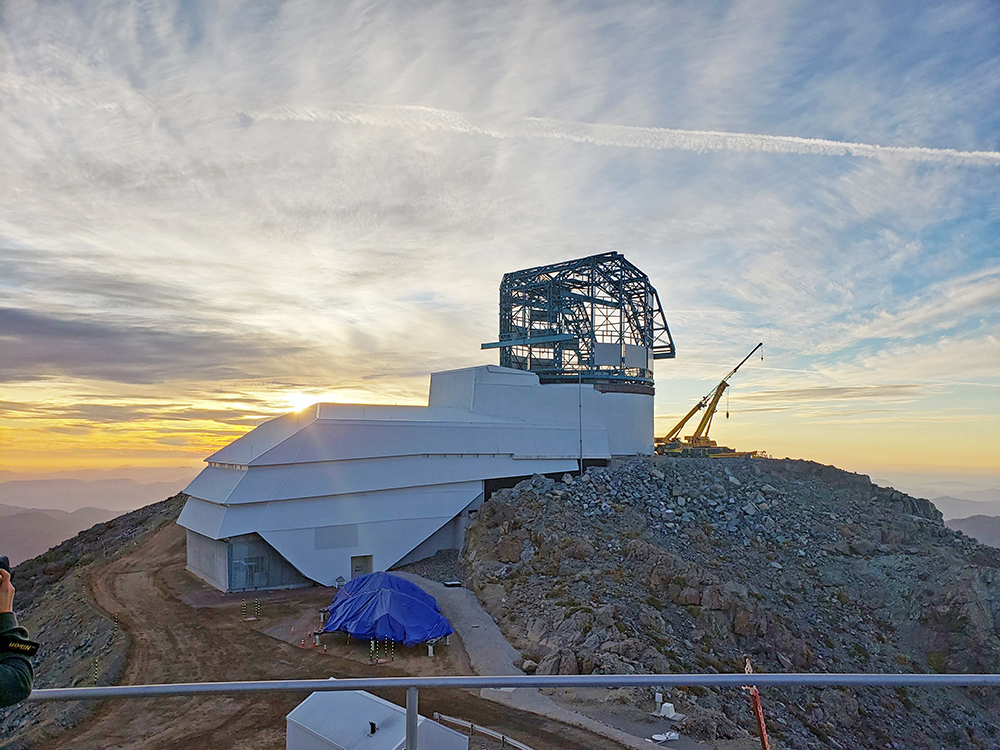The National Science Foundation has renamed a major new observatory after Georgetown University graduate and astrophysicist Vera Rubin (GRD ’54), making it the first national U.S. observatory to be named after a female astronomer.
The observatory, formerly known as the Large Synoptic Survey Telescope, will now be called the NSF Vera C. Rubin Observatory to recognize the contributions Rubin made in providing evidence of the existence of dark matter, according to a Jan. 7 news release from the NSF.
Renaming the observatory after Rubin is a great way to memorialize her achievements in the field of astronomy, according to the Chair of the Georgetown University physics department, Jeff Urbach.

“Her research really laid the groundwork for the realization that visible matter didn’t make up the majority of what’s out there,” Urban said in an interview with The Hoya. “Now the community understands the importance of what she has done, and this was a way to recognize that.”
The observatory, which is located on Cerro Pachón in Chile, will begin operations in 2022, according to the Jan. 7 news release. The observatory will help complete the Legacy Survey of Space and Time, a 10-year survey of the visible sky, and will aim to advance what is known about dark energy and dark matter.
A national observatory named after a female astronomer exemplifies the capabilities of women in STEM, NSF director France Córdova wrote in a news release on the NSF website.
“The Rubin name will have yet another way to inspire women and men eager to investigate,” Córdova wrote. “Named after an astronomer who provided important evidence of the existence of dark matter, the NSF Vera C. Rubin Observatory seems destined to make science history with its extraordinary capabilities that will come to bear in the next few years.”
As part of her research, Rubin studied the behavior of spiral galaxies, according to NPR. Under previous assumptions that all matter is visible, celestial bodies farther away from the center of the galaxy should travel slower. However, Rubin observed certain bodies moving faster than expected, suggesting that there must be unseeable matter, otherwise known as dark matter, influencing these planetary speeds.
Rubin’s accomplishments in the field of astronomy make her the perfect individual to name the observatory after, according to Sarah Jiang (COL ’21), a student researcher in the Georgetown physics department.
“It makes sense that someone who was so instrumental in the field of astrophysics would have an observatory named after her. It’s just surprising that it took this long,” Jiang said in an interview with The Hoya.
After receiving her Ph.D. from Georgetown in 1954, Rubin returned to the university and served as a professor and a researcher. In June 2019, three years after Rubin’s death, Georgetown hosted the Vera Rubin Symposium to bring together leading astrophysicists to celebrate Rubin’s legacy in the field.
Scientific organizations should celebrate the successes of women, especially women in fields of study where they are historically underrepresented, according to Georgetown University Astronomical Society President Laura Caron (SFS ’20).
“I think the NSF and other scientific institutions have a duty to recognize all people who have made significant scientific contributions,” Caron wrote in an email to The Hoya. “Women and other disadvantaged groups should be recognized for their contributions as well as for the challenges they have faced in the field.”
Honoring Rubin’s impact is an important step in recognizing the contributions of women to various academic fields, according to C.C. Borzilleri (COL ’19), who led efforts to memorialize Georgetown graduates in a 2019 exhibit in Hoya Court. (Full disclosure: Borzilleri formerly served on the editorial board for The Hoya.)
“Bringing women out of historical obscurity is an important step towards making sure that they can be seen and admired for all that they have done,” Borzilleri wrote in an email to The Hoya. “The physical memorialization of women, on Georgetown’s campus and throughout the world, is a mission far from complete, but the progress of the Dr. Rubin Observatory is an important step forward.”




















